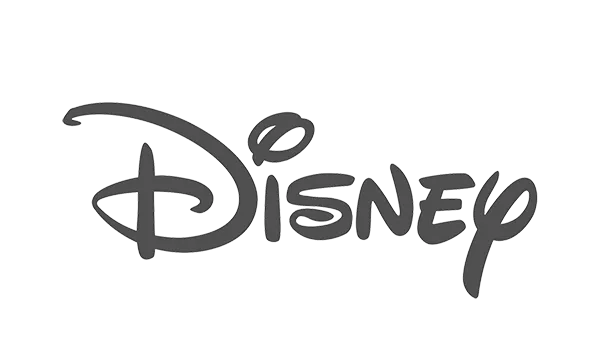Introduction

We spend hundreds of hours researching the best HR and recruiting software so you don’t have to. We never take money from vendors during our research phase and rely heavily on practitioners and experts to help us recommend the right software. However we may earn a small fee if you click on vendor links on this page.
Orgnostic takes a unique approach to people analytics for companies of all sizes. Their platform can take your raw data and turn it into a story-like report that provides insights, recommendations, and beautiful visuals that are easy to understand and share.
Ratings
Ease of Use
Best For
Key Differentiator
Price
Free Trial
PROS
- Each HR metric within Orgnostic is accompanied by an explanation, including the definition, formula to calculate it, and in some cases, insights you can get from the metric.
- The tool is available for any type of HR tech stack combination. You can do the self-service onboarding if you use one of the integrated HRIS or ATS products, or have their team connect your data manually (same if it comes from another type of software like an LMS). Spreadsheet integrations are possible too.
- A free trial is available for the Pro plan, letting you see all the functionalities of the platform to test it out before you decide if one of the plans is for you.
- Strong security practices, SOC 2-certified.
CONS
- On the free trial, unless you have an HRIS or ATS that integrates with the tool, you’d have to reach out to their team for a manual connection. While this process can run very smoothly, it does take away from the self-service aspect of the trial.
- Insights, one of the key differentiators in Orgnostic’s offering, is only offered in the Pro plan (see our pricing section for more details).

Crunchr

Crunchr

Lattice

Lattice

Agentnoon

Agentnoon
ChartHop
ChartHop

OrgVue

OrgVue

Need Help? Talk to an HR Software Advisor!
Tell us more about your company & an HR Software Advisor will help you find the right software








Orgnostic’s approach to People Analytics revolves around stories and questions. One of their mottos, you could say, is “data storytelling instead of dashboards”. Their idea is that all sets of data contain a story, and with the right questions, that story can be uncovered and it can be crucial to business decision-making.
It also makes metrics easier to understand and share with your team. Within the platform, each metric is accompanied by an explanation. These explanations are powered by over 30 years of research on organizational culture and leadership, covering over 10,000 companies.
Through a couple demos of the tool and our own take at a free trial, we could see some of this in action. Take a metric like Turnover Rate. Orgnostic allows you to observe your turnover through time and identify trends and changes while also being able to filter per departments, locations, roles, teams etc. to better understand turnover per different demographics and be able to act accordingly. What’s great is that they also accompany that with a definition of the metric, an explanation of how they calculate it, the data source, and the insight, as shown below:

The insight is perhaps the most interesting part, and where Orgnostic truly shines. You get a well-written take on why that metric is important, what you can do with it, and how you can combine it with other metrics to develop a deeper understanding of the underlying issue.
Some metrics contain deeper insights, usually appearing if the system finds an anomaly in your data. An example of such an anomaly would be a gender pay gap. The following screenshot shows you how much they can share on that given metric, including suggestions on what to do about it, like encouraging negotiations by making the salary range for a position completely transparent.

Getting Started with Orgnostic
For the user, getting all this presented is quite simple. You’d start by signing up for a free trial, and then either choose an HRIS or ATS to integrate (see our integrations section for a full list), or reach out to their team to manually connect another system. You could also add data via a spreadsheet or CSV file.
Once this is done (the time varies depending on the amount of data), you can start reading up on the story behind your numbers, but another great aspect is that you get an automatic data audit. The system tells you which areas to improve, and you can reach out to their team for further clarification.
Orgnostic Workplace Surveys
Speaking of automation and data gathering, Orgnostic also supports surveys. Onboarding and exit interviews can be triggered by events in your HRIS or ATS. Once answered, these provide data that is fed directly into Orgnostic, closing the loop. They also have diagnostic, pulse and many other types of surveys stemming from the psychology departments of Harvard and the University of Michigan.
Does that all sound straightforward? We’ll say it most certainly is. The platform is very intuitive, well-designed, easy to use, and also pleasing to the eye. If you have seen a fair share of People Analytics tools and found some of them too excel-looking, Orgnostic will feel like a breath of fresh air.

Orgnostic’s Search Function
Recently-strengthened is their search option, found in the navigation bar. Through this, you can search for any metric or topic. As you start typing, there is a drop down that shows options and suggestions (like on Google) of the various People Analytics chapters available within the tool. Once you click on the metric, it will take you directly to the chapter where that metric is so you can explore in detail. As of 2023, it's got a function similar to ChatGPT, where you can give it prompts and have it perform actions instead of being limited to search.

For those looking at alternatives to Looker and Tableau, which would encompass high customization of different visualizations and custom dashboard builders, Orgnostic wouldn’t be the best fit.
Hotjar, FintechOS, Payhawk, GetYourGuide, Blinkist
- Surveys: Through Orgnostic, HR managers can perform onboarding, diagnostic, exit, and many types of surveys to measure team effectiveness, employee wellbeing, and many other metrics that would feed directly into the tool.
- Data Health Report: This part of the tool tells you if the data is clean or if it has data missing, how this might be affecting a metric in particular, and what you can do to clean it up and get the true measure.
The way all HR metrics are organized at Orgnostic is by dividing them into 10 chapters, as they call them. As of mid-2022, these are:
- Headcount
- Talent Acquisition
- DE&I
- Talent Management
- Rewards
- Culture
- Employee Wellbeing
- Team Effectiveness
- Turnover
- Leadership
While you can integrate your data by reaching out to their team or by uploading a spreadsheet, Orgnostic also offer native and self-service integrations with most of the top HRIS and ATS tools in the market. We recommend checking out their website for a full list, but some notable names include BambooHR, Personio, Bob, Gusto, Namely, UKG, Greenhouse, Workable, and more.
While we certainly suggest checking out Orgnostic’s pricing page for more detailed, interactive, and up-to-date pricing, we can share that they have the following pricing plans:
- Free: This includes 1 HRIS and 1 ATS integration, Data Health audit, 3 months of data history, and access to over 120 built-in metrics. This plan has actually improved a lot, since before it only included a handful of metrics.
- Pro: This starts at $4 per employee per month if you have 2 employees, less if you pay yearly, and less as you scale up in headcount. To give you an idea of how it scales, a company with 100 people would pay $200 per month, and one with 1,000 would shell out a monthly $1,800. The Orgnostic Pro plan includes everything on the free plan, plus unlimited integrations, advanced data segmentation, automated reporting, e-NPS surveys, the magic link sharing capabilities, and more.
- Tailored: Orgnostic also offer a custom plan with unique people analytics and additional data science support. Actually, if you have more than 5,000 employees, all of their plans go into the custom pricing model.
Lastly, do bear in mind that the Pro Plan is available for a 14-day free trial and you don’t need a credit card to sign up.
Orgnostic is used by enterprises in IT or tech within Europe and the US. Thanks to their free plan, it can also be useful for SMBs (100-1000 employees), scale-ups, and growing companies. When we first came across the product, the typical Orgnostic customer didn't have a People Analytics team and was comfortable with other roles, mostly HR, handling the platform. Since then, they have focused more and more on the enterprise sector and can work with the analytics team within such companies in several ways. For instance, as a tool for distributing People data to HRBP levels.
We first did a demo of Orgnostic in mid 2022. Then, we had the pleasure of seeing how much it has grown in another demo in early 2023. The tool has expanded to be able to cater to the enterprise segment, yet at the same time it has become more friendly to small HR teams. They believe that analytics can become a crucial tool for HR professionals, and still try for Orgnostic to work well even if they lack a data science team.
While it's always been GDPR compliant, Orgnostic has also added more security features in 2023, which has earned them an SOC 2 Type 2 certification.
Implementing Orgnostic can take minutes if you use one of the HRISs or ATSs that they currently integrate with natively or upload a spreadsheet. For other systems, however, you’d need to get in touch with their team and arrange to have it connected manually. Times for that will vary on a case-by-case basis, of course, but we can say that their team is very quick to respond to inquiries and overall have a great attitude. Sometimes, those user inquiries are how they come up with new integrations to build!
Now, once you do upload your data, it takes around 30 minutes or even a day or two for the system to ingest it. This depends on the complexity of the data, of course.
All of Orgnostic’s paid plans include a certain number of hours of Data Scientist support. For instance, 12h a quarter for the Starter plan, or 24h a quarter for the Pro.
Orgnostic was started by Luka Babic and Igor Bogicevic. Luka is a psychologist with a People Operations background. Igor Bogicevic is a physicist who went into tech. He did a 5-year stint at Vast.com (an IT company recently acquired by Vroom) and then went on to co-found Seven Bridges; a Biotechnology research company.
This combined background provided skills in psychology, management, computer science, and connection with the academic community. In turn, these were ideal for them to create a knowledge-driven business and tackle the problems of HR data management.
Their mission is to provide HR and leadership teams with people analytics and insights with the same quality an in-house data scientist would provide, but by accessing their platform. Their idea is that this can create better and more sustainable businesses.
Company HQ
Legal HQs are Newark, DE in the US, and Belgrade, Serbia, but most of the team works remotely.
Number of Employees
30~
Year Founded
2019
Amount Raised
Last raised $5M US during the fall of 2021. They have 9 investors, such as Script Capital, Rony Kahan, and Earlybird Ventures. The former actually put together an interesting post on why they invested in Orgnostic.







